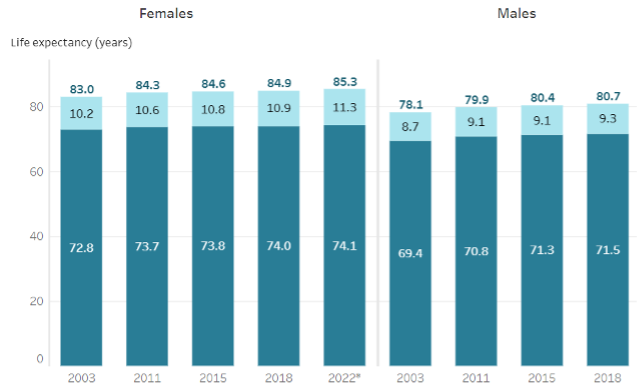How the 2023 Intergenerational Report might impact aged care
The recently released Intergenerational Report highlights trends and impacts over the next 40 years and highlights the significant impact of an ageing population.
A major theme in the recent Intergenerational Report was the impact on Australia’s economy and society of an ageing population, which will lead to a rising demand for aged care over the next 40 years. This reinforces the importance of considering aged care needs ahead of a crisis situation.
The care and support sector was singled out as one of the key sectors expected to grow over the next four decades as it expands to accommodate the needs of an increasing number of older Australians. In particular, the 85 plus age group is expected to triple over the next 40 years.
Meeting demand will require ongoing investment and improvements in the delivery of aged care services. But with predictions of budget deficits for the next 40 years, the ability for the Government to fully fund the increasing cost pressures is limited. A greater and increasing share of costs will likely need to be met by the person accessing care services, where they have the financial means to do so. Australians need to plan ahead for their aged care needs. Aged care considerations should form a key component of retirement planning to take into account the costs and related financial decisions.
While longer life expectancies will see Australians spending more years in full health, on the flip side, we are also likely to experience an increased number of years in ill-health. This will in turn accelerate spending in health and aged care as well as demand for services and advice. As shown in the chart below, the average number of years that a person lives in ill-health has been steadily increasing across the last decades and this trend is expected to continue to grow.


Source: Australian Institute of Health & Welfare, Australian Burden of Disease study, 2022.
Most Australians who reach old age will need aged care services. The Australian Government provides the majority of funding, across both residential aged care and home care services, with users contributing a small portion of the costs. Government spending on aged care is projected to grow from 1.1% of GDP to 2.5% in 2062-63 and aged care spending per person will also increase. The composition of government spending across the home care and residential care is shown in the graph below.

Source: Treasury
Without a doubt, Australians need to consider aged care options and strategies not only for their own future needs, but also the needs of older parents or other family members. If you would like to start the discussion and explore your options, contact us here to arrange an appointment.
IMPORTANT INFORMATION: This document has been prepared by Aged Care Steps Pty Limited, ABN 42 156 656 843 AFSL 486723, registered tax (financial) advisers (25581502) based on our understanding of the relevant legislation at the time of writing. While every care has been taken, Aged Care Steps Pty Limited makes no representations as to the accuracy or completeness of the contents. The information is of a general nature only and has been prepared without consideration of your individual objectives, financial situation or needs. Before making any decisions, you should consider the appropriateness for your personal investment objectives, financial situation or individual needs. We recommend you see a financial adviser, registered tax agent or legal adviser before making any decisions based on this information. Current at 1 January 2023.






